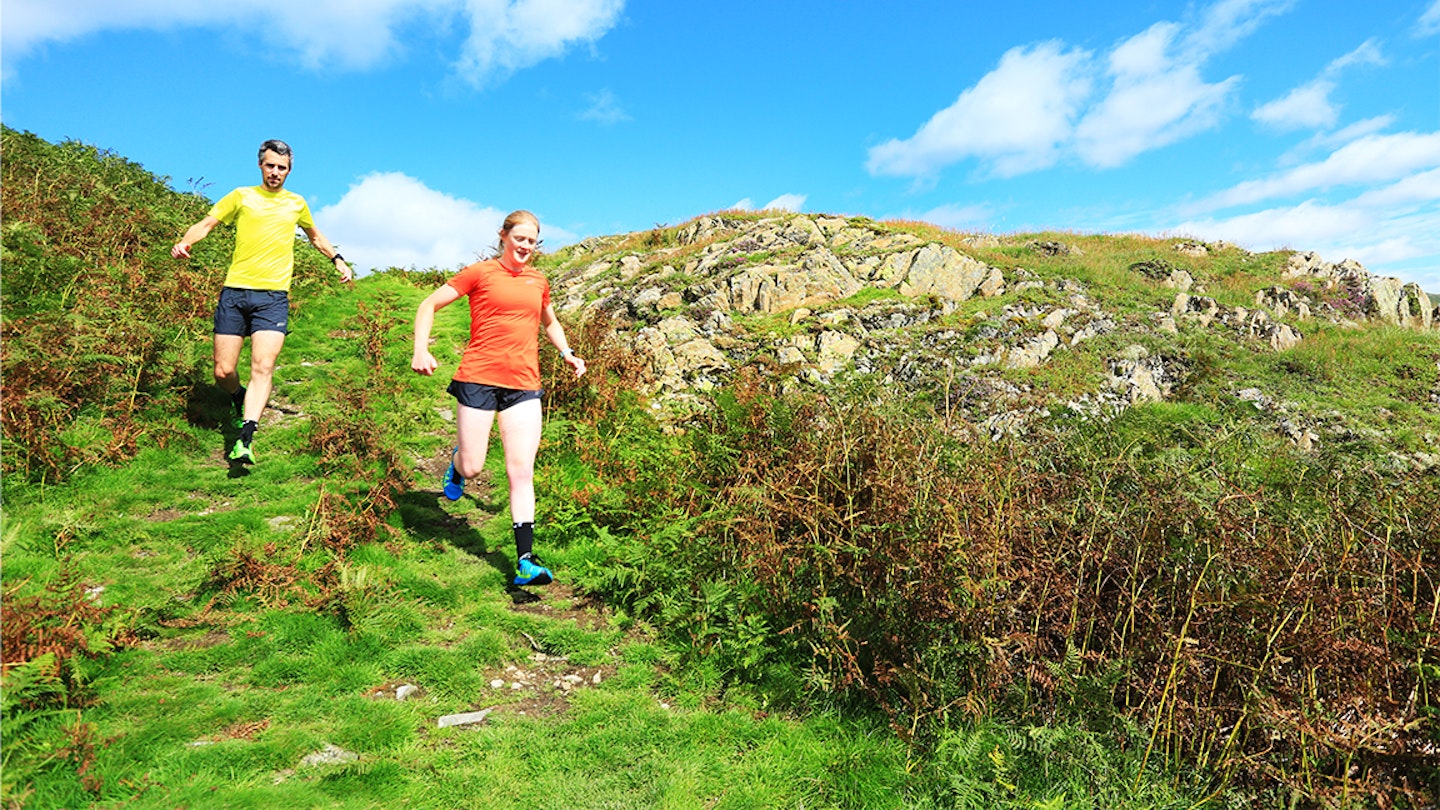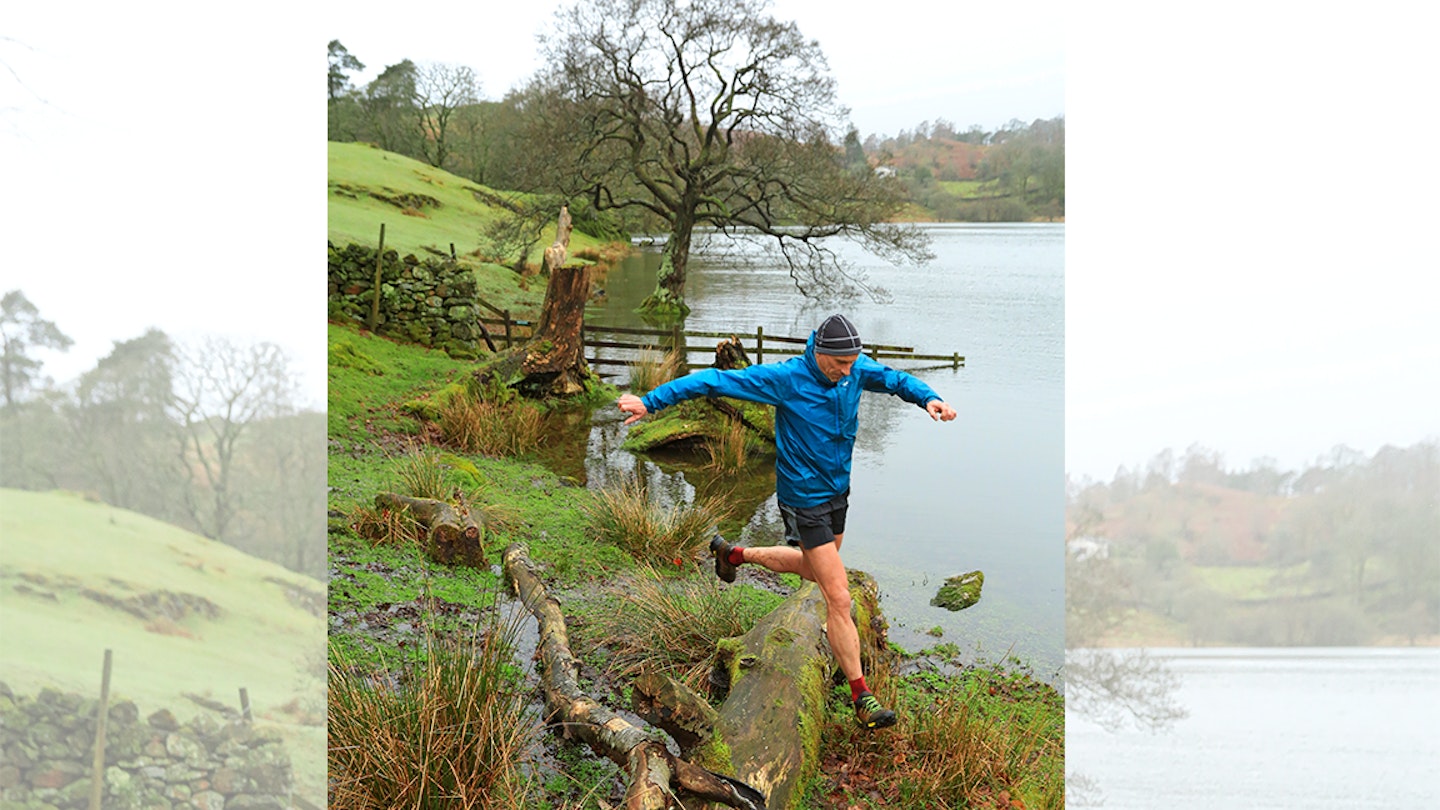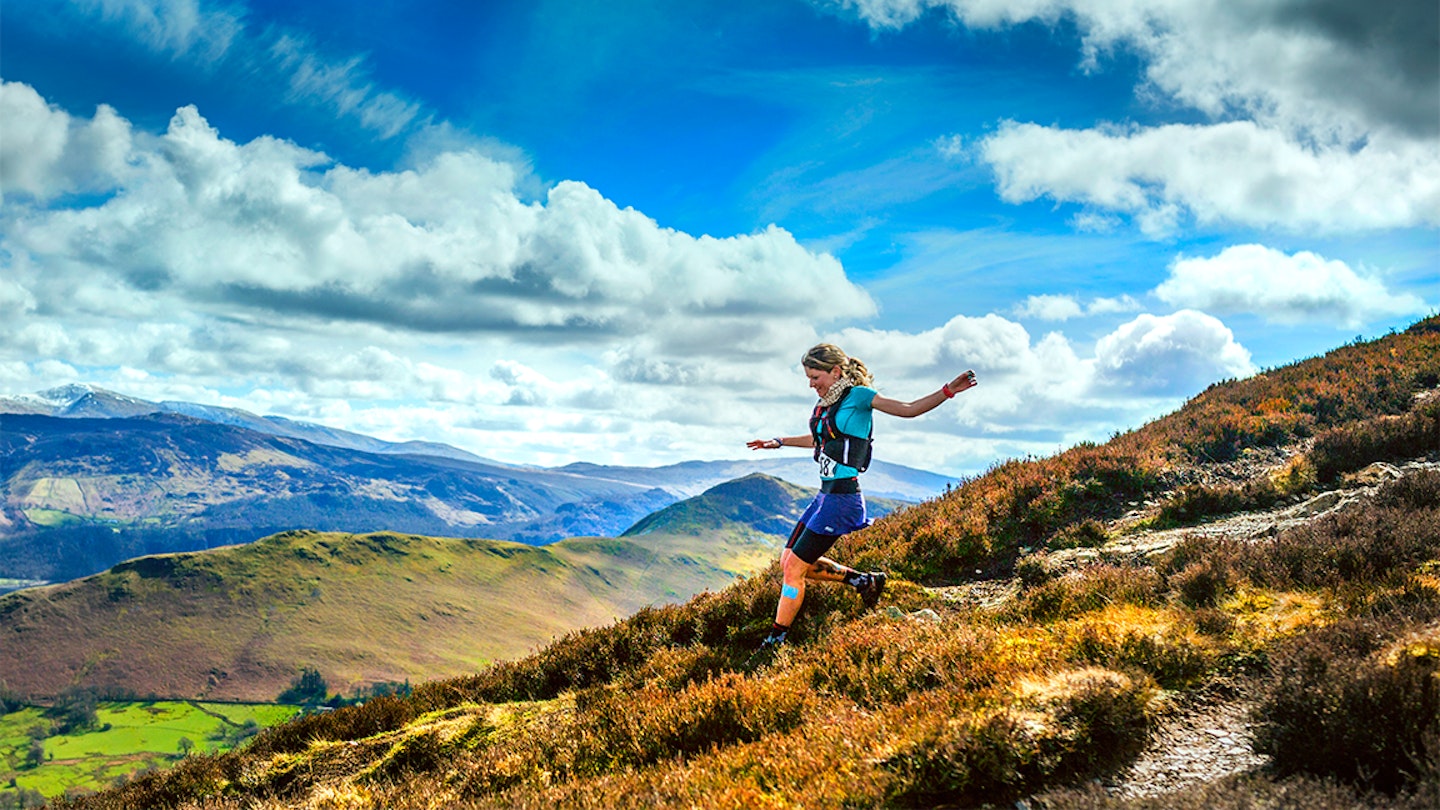How to run downhill could be seen as a mere matter of physics. What goes up must come down, right? Well, no matter how much of a beating your quads get on the uphill sections, it’s generally a simple case of ploughing upwards.
We've all experienced those extreme DOMS (delayed onset muscle soreness) that only come with driving your legs over a hilly trail. Running downhill puts a lot of extra stress on the muscles whose job it is to stabilise the legs as you run.
Be warned, running downhill does carry its own demands and perils. But you can nail those descents with these seven handy tips and learn how to run downhill fast.
1. Downhill running skill

You need to be agile with fast reactions and be able to read the terrain ahead. This will allow you to choose where you plant your feet. These skills are gained by repeated practice. Make time during your training runs to include some short, technical downhill sections and repeat them several times. Remember to use shorter strides and a quicker cadence. This will help you stay on your toes and remain agile enough to avoid any protruding roots or toe-busting rocks out on the trail.
2. Targeted run strength
Your muscles must be able to absorb the impact of the increased forces associated with running quickly downhill. Your quadriceps come under increased stress when running downhill. This is because they're working hard to stabilise and protect the knee.
You should seek out technical terrain in training and practice plyometric work like taking off and landing on your weaker leg. Don't forget to add some core and leg strength exercises to your weekly routine to build robustness and lower your risk of injury.
3. Find the right shoes

If you haven’t got decent tread, then you’re going to struggle, no matter how good you are. Depending on the terrain that you tend to run on, it's worth investing in the right pair trail running shoes. Winter trail running shoes excel on soft and muddy ground, while others are at home on hard-packed paths and trails.
The right shoes aid comfort but also help you to stay safe when navigating steep and slippery sections. It's not all about the shoes though. Other kit like a good pair of running poles will provide extra support for undulating runs.
4. Add some hill workouts
The idea (in theory) is to keep a consistent effort on the up and the down. Pick a testing slope you can run up for 30-60 seconds. Attack the hill but maintain your effort on the way back down; turn and go up again without rest. Continue without rest for 10 minutes, or even five will make a difference if that's all you can manage. Your main aim is to maintain a consistent pace.
After that time, allow yourself a rest for three minutes. Repeat. Adding some hill efforts to your training plan will transform you into a much better downhill and uphill runner. As always with these things, consistency is key.
5. Concentrate on the trail

You need to anticipate every rock, tree root and mud patch. To do that you need to have your hyper-concentration mode activated. Stay alert to your foot placement, immediately in front and five steps down the trail.
This is even more crucial in the latter stages of a race, and during hard training sessions when your mind and body are fatigued. And don’t forget practice, practice, practice your downhill running. It's often overlooked for uphill repeats of speed work, but it shouldn’t be.
6. Pretend you're a windmill
Seriously, it works! It’s important not to forget that your arms also have a key role to play if you want to run downhill faster. Push them out as high and wide as you feel comfortable, and use them to aid your balance – as if you were a windmill. You might think you look a bit silly doing so, but it works. Imagine you are on a tight rope, what would your arms do? Now replicate that when running downhill.
7. Switch off
Once you have the previous six points nailed, you can then run downhill without thinking too much about it. Or, as some top runners say, switch off the brain and let the legs take control.
Once you're used to dodging obstacles on the trail, switch from looking at your feet to looking further ahead at what's coming up. This way you'll be able to anticipate any issues, like low-lying branches or dips in the trail, and side-step them.
